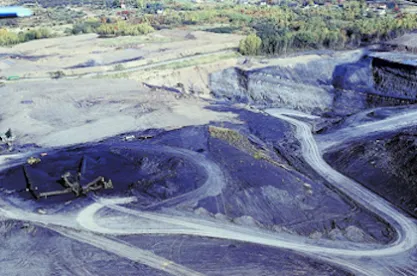On August 16, 2018, the U.S. Department of Labor’s Mine Safety and Health Administration (MSHA) presented a webinar, “Safety Improvement Technologies for Mobile Equipment at Surface Mines, and for Belt Conveyors at Surface and Underground Mines.”
Roslyn Fontaine, MSHA’s deputy director of standards, regulations and variances, moderated a panel discussion accompanied by Timothy Watkins, deputy administrator for coal mine safety and health; Brian Goepfert, chief of the safety division for metal/nonmetal safety and health; and William Francart, MSHA’s director of technical support.
The discussion related to MSHA’s June 26, 2018, request for information (RFI) in the Federal Register seeking input from the public regarding engineering controls and best practices to decrease accidents related to powered haulage equipment, increased seat belt use, increased visibility for operators of heavy equipment around their machines, implementation of collision warnings systems, prevention of over-travel of equipment operating near highwalls and dump points, and the prevention of entanglement hazards near belt conveyors. MSHA is seeking comments and information from the regulated community. The deadline for stakeholders to submit comments to MSHA is December 24, 2018.
To promote seat belt use, MSHA is asking for information regarding engineering controls in the event an operator does not fasten his or her seat belt. Specifically, MSHA is interested in audio or visual warning devices that would encourage and promote seat belt use without interfering with the operation of the equipment. MSHA gave the example of placing bright orange sleeves on seat belts so that supervisors could monitor seat belt use more easily from a distance.
Because many recent accidents and fatalities in the industry have involved large mobile equipment striking smaller mobile equipment due to poor visibility, MSHA is also focused on ways to improve the sight lines of operators of large mobile equipment. MSHA is seeking feedback from the regulated community on collision avoidance and warning systems technologies and engineering controls to help reduce the number of these accidents.
In addition, MSHA would like information on technologies, policies, and procedures to prevent over-travel at the edges of highwalls and dump points. Specifically, MSHA is interested in ways to help operators better identify edges via technological advancements. Finally, MSHA is requesting comments on ways to prevent miners from becoming entangled with belt drives, belt rollers, and discharge points on conveyors, including best practices on lockout/tagout technologies that warn operators when guards have become misaligned, and proximity detection for conveyor belts.
In two weeks’ time, MSHA will upload a full public transcript from this meeting to the MSHA website.




 />i
/>i
